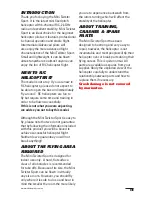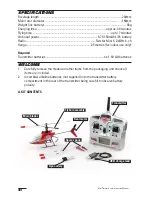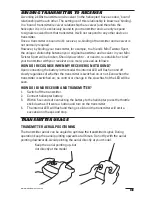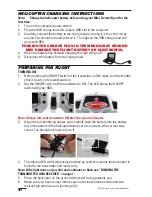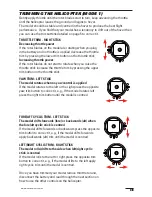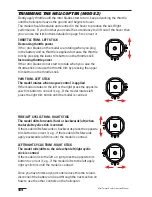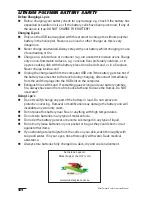
7
www.modelengines.com.au
BINDING TRANSMITTER TO RECEIVER
A working 2.4Ghz transmitter and receiver (in the helicopter) have a coded, ‘bound’
relationship with each other. The setting up of this relationship is known as ‘binding’.
In a ‘bound’ transmitter/receiver relationship the receiver (and therefore the
helicopter it is in) is exclusively bound to your transmitter and can only respond
to signals received from that transmitter. It will not respond to any other device or
transmitter.
Once a transmitter is bound to it’s receiver, re-binding of transmitter and receiver is
not normally required.
However, by binding your transmitter, for example, to a friend’s Mini Twister Sport,
the unique relationship between your original transmitter and receiver in your Mini
Twister Sport will be broken. Should you wish to - or need to, re-establish or ‘bind’
your transmitter with your receiver once more; proceed as follows:
HOW DO I RECOGNISE WHEN MY RECEIVER IS NOT BOUND?
Upon connecting the battery in the model the internal LED will flash on and off
slowly regardless of whether the transmitter is switched on or not. Even when the
transmitter is switched on; no control or change in the slow flash of the LED will be
seen.
HOW DO I BIND RECEIVER AND TRANSMITTER?
1. Switch off the transmitter.
2. Connect helicopter battery.
3. Within 5 seconds of connecting the battery to the helicopter press the throttle
stick down as if it were a button and turn on the transmitter
4. The internal LED will flash and then go solid and the transmitter will emit a
succession of beeps and stop.
TRANSMITTER USAGE
TRANSMITTER AERIAL POSITIONING
The transmitter aerial can be angled to optimise the transmitted signal. During
operation keep the aerial pointing upwards at all times. Do not fly with the aerial
pointing downwards. Avoid pointing the aerial directly at your model.
Keep the aerial pointing up–but
not directly at the model



